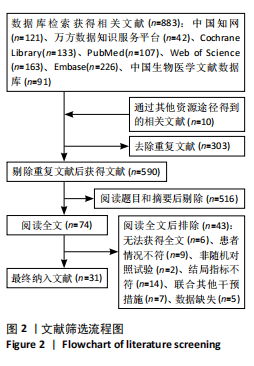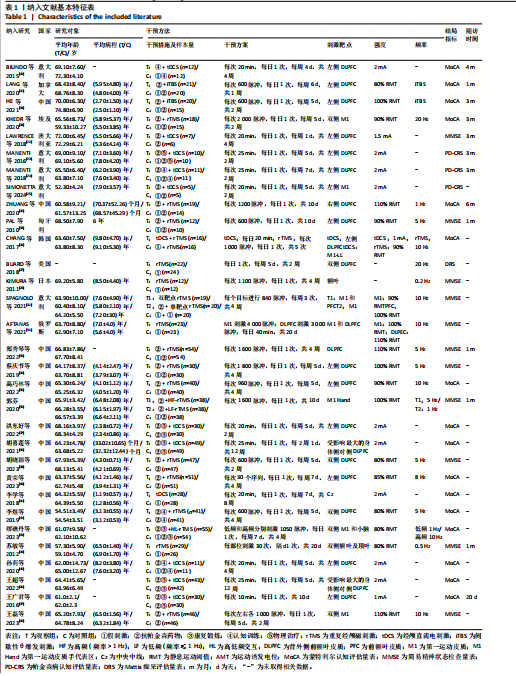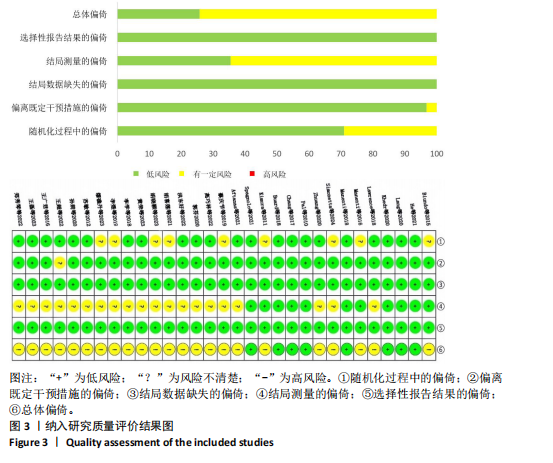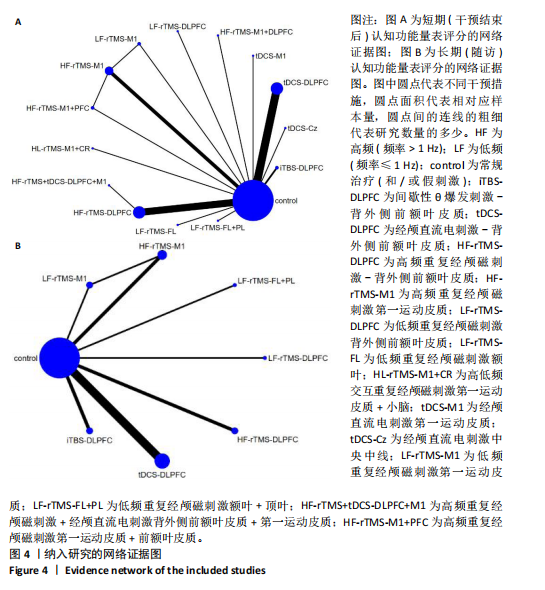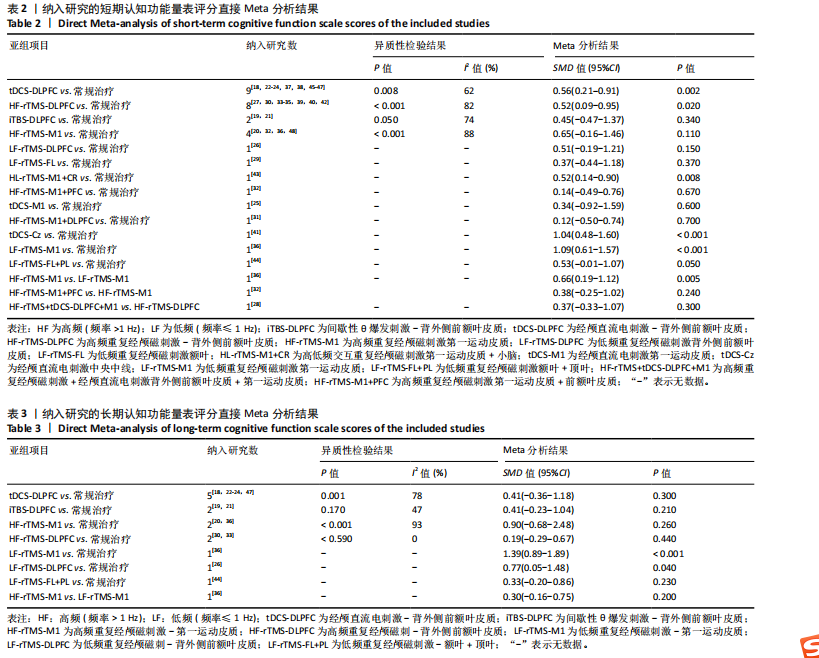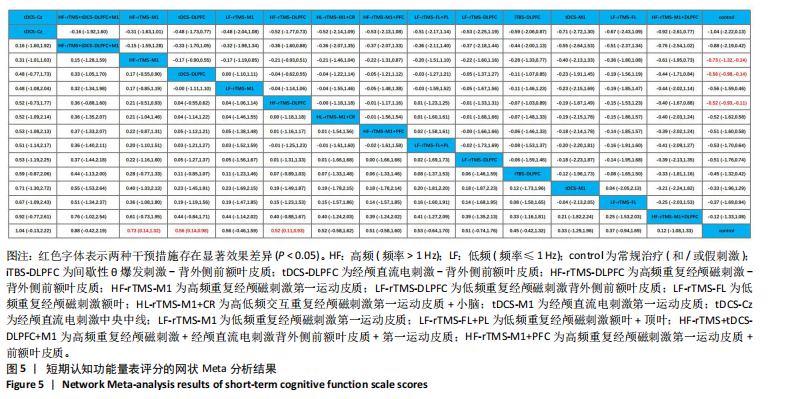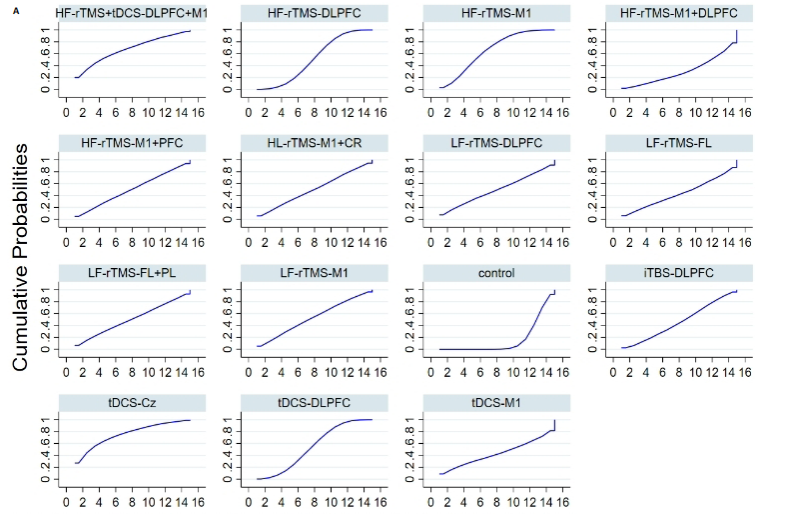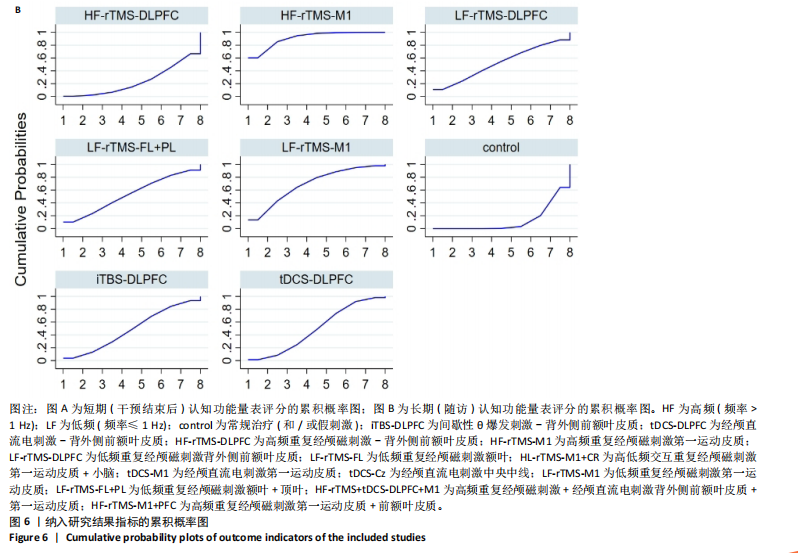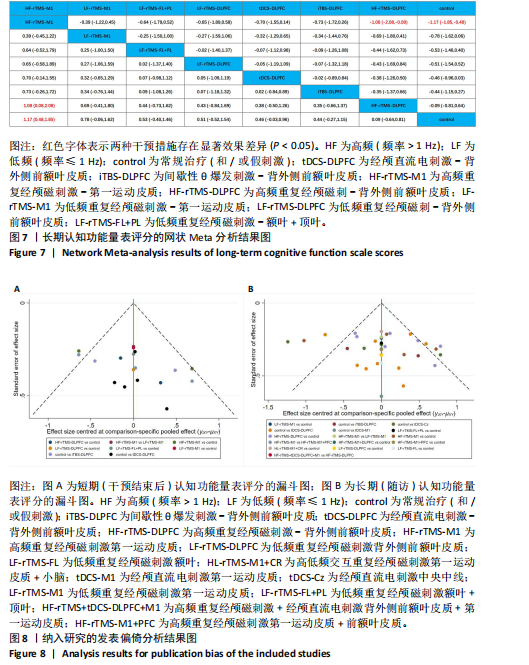[1] MORRIS HR, SPILLANTINI MG, SUE CM, et al. The pathogenesis of Parkinson’s disease. Lancet. 2024;403(10423):293-304.
[2] 陈芝君,马建,唐娜,等.中国帕金森病疾病负担变化趋势分析及预测[J].中国慢性病预防与控制,2022,30(9):649-654.
[3] NEMADE D, SUBRAMANIAN T, SHIVKUMAR V. An update on medical and surgical treatments of Parkinson’s disease. Aging Dis. 2021;12(4):1021-1035.
[4] ARMSTRONG MJ, OKUN MS. Diagnosis and treatment of Parkinson disease: a review. JAMA. 2020;323(6):548-560.
[5] GOLDMAN JG, SIEG E. Cognitive impairment and dementia in Parkinson disease. Clin Geriatr Med. 2020;36(2):365-377.
[6] LIU H, ZHONG Y, ZENG Z, et al. Drug-related problems in hospitalised Parkinson’s disease patients in China. Eur J Hosp Pharm. 2022;29(6):308-312.
[7] SUDBRACK-OLIVEIRA P, RAZZA LB, BRUNONI AR. Non-invasive cortical stimulation: Transcranial direct current stimulation (tDCS). Int Rev Neurobiol. 2021;159:1-22.
[8] ZEWDIE E, CIECHANSKI P, KUO HC, et al. Safety and tolerability of transcranial magnetic and direct current stimulation in children: Prospective single center evidence from 35 million stimulations. Brain Stimul. 2020;13(3):565-575.
[9] FREEDBERG MV, REEVES JA, FIORITI CM, et al. Reproducing the effect of hippocampal network-targeted transcranial magnetic stimulation on episodic memory. Behav Brain Res. 2022;419:113707.
[10] 杨钰琳,常万鹏,丁江涛,等.经颅直流电刺激不同靶点治疗帕金森病效果的网状Meta分析[J].中国组织工程研究, 2024,28(11):1797-1804.
[11] DENG S, DONG Z, PAN L, et al. Effects of repetitive transcranial magnetic stimulation on gait disorders and cognitive dysfunction in Parkinson’s disease: a systematic review with meta-analysis. Brain Behav. 2022; 12(8):2697.
[12] SUAREZ-GARCÍA DMA, GRISALES- CÁRDENAS JS, ZIMERMAN M, et al. Transcranial direct current stimulation to enhance cognitive impairment in parkinson’ s disease: a systematic review and meta-analysis. Front Neurol. 2020;11:597955.
[13] BEGEMANN MJ, BRAND BA, ĆURČIĆ-BLAKE B, et al. Efficacy of non-invasive brain stimulation on cognitive functioning in brain disorders: a meta-analysis. Psychol Med. 2020;50(15):2465-2486.
[14] 黄木兰,王丽萍,胡柯嘉,等.非侵入式脑刺激对帕金森病患者执行功能的影响:网状meta分析[J].海军军医大学学报, 2024,45(5):584-591.
[15] STERNE JAC, SAVOVIĆ J, PAGE MJ, et al. RoB 2: a revised tool for assessing risk of bias in randomised trials. BMJ. 2019;366:I4898.
[16] 刘津池,刘畅,华成舸.随机对照试验偏倚风险评价工具RoB2(2019修订版)解读[J].中国循证医学杂志,2021,21(6): 737-744.
[17] 王琪,王建成,潘蓓,等.网状Meta分析证据质量分级:GRADE方法学前沿与进展[J].中国循证医学杂志,2020,20(8):979-985.
[18] BIUNDO R, WEIS L, FIORENZATO E, et al. Double-blind randomized trial of t-DCS versus sham in Parkinson patients with mild cognitive impairment receiving cognitive training. Brain Stimul. 2015;8(6):1223-1225.
[19] HE W, WANG JC, TSAI PY. Theta burst magnetic stimulation improves parkinson’s-related cognitive impairment: a randomised controlled study. Neurorehabil Neural Repair. 2021;35(11):986-995.
[20] KHEDR EM, MOHAMED KO, ALI AM, et al. The effect of repetitive transcranial magnetic stimulation on cognitive impairment in Parkinson’s disease with dementia: Pilot study. Restor Neurol Neurosci. 2020;38(1):55-66.
[21] LANG S, GAN L S, YOON E J, et al. Theta-burst stimulation for cognitive enhancement in Parkinson’s disease with mild cognitive impairment: a randomized, double-blind, sham-controlled trial. Front Neurol. 2020; 11:584374.
[22] LAWRENCE BJ, GASSON N, JOHNSON AR, et al. Cognitive training and transcranial direct current stimulation for mild cognitive impairment in Parkinson’s disease: a randomized controlled trial. Parkinsons Dis. 2018;4318475.
[23] MANENTI R, BRAMBILLA M, BENUSSI A, et al. Mild cognitive impairment in Parkinson’s disease is improved by transcranial direct current stimulation combined with physical therapy. Mov Disord. 2016;31(5):715‐724.
[24] MANENTI R, COTELLI MS, COBELLI C, et al. Transcranial direct current stimulation combined with cognitive training for the treatment of Parkinson Disease: a randomized, placebo-controlled study. Brain Stimul. 2018;11(6):1251-1262.
[25] SIMONETTA C, BISSACCO J, CONTI M, et al. Motor cortex transcranial direct current stimulation improves non-motor symptoms in early-onset Parkinson’s disease: a pilot study. J Neural Transm (Vienna). 2024; 131(2):189‐193.
[26] ZHUANG S, WANG FY, GU X, et al. Low-frequency repetitive transcranial magnetic stimulation over right dorsolateral prefrontal cortex in Parkinson’s disease. Parkinson’s Dis. 2020;7295414.
[27] BUARD I, SCIACCA DM, MARTIN CS, et al. Transcranial magnetic stimulation does not improve mild cognitive impairment in Parkinson’s disease. Mov Disord. 2018; 33(3):489-491.
[28] CHANG WH, KIM MS, PARK E, et al. Effect of dual-mode and dual-site noninvasive brain stimulation on freezing of gait in patients with Parkinson disease. Arch Phys Med Rehabil. 2017;98(7):1283-1290.
[29] KIMURA H, KURIMURA M, KUROKAWA K, et al. A comprehensive study of repetitive transcranial magnetic stimulation in Parkinson’s disease. ISRN Neurol. 2011; 2011:845453.
[30] PAL E, NAGY F, ASCHERMANN Z, et al. The impact of left prefrontal repetitive transcranial magnetic stimulation on depression in Parkinson’s disease: a randomized, double-blind, placebo-controlled study. Mov Disord. 2010;25(14): 2311-2317.
[31] AFTANAS LI, BRACK IV, KULIKOVA KI, et al. Clinical and neurophysiological effects of the therapeutic combination of high-frequency rhythmic transcranial magnetic stimulation of the motor and frontal cortex in Parkinson’s disease. Neurosci Behav Physiol. 2021;51(2):135-141.
[32] Spagnolo F, Fichera M, Chieffo R, et al. Bilateral repetitive transcranial magnetic stimulation with the h-coil in Parkinson’s disease: a randomized, sham-controlled study. Front Neurol. 2021;11:584713.
[33] 郑秀琴,于苏文,何益民,等.高频重复经颅磁刺激对帕金森病患者临床症状及其细胞衰老相关因子的影响[J].中华物理医学与康复杂志,2022,44(5):427-432.
[34] 蔡庆节,徐鹏飞,邹涛,等.高频重复经颅磁刺激对伴抑郁的帕金森病患者情绪及认知功能的影响[J].癫痫与神经电生理学杂志,2019,28(6):331-335.
[35] 高巧林,梁佳佳,王娜,等.高频重复经颅磁刺激治疗对早期帕金森病患者轻度认知功能障碍的临床疗效观察[J].贵州医药,2022,46(7):1048-1049.
[36] 郭芬.高频重复经颅磁刺激在帕金森病患者中的应用效果观察[J].医药论坛杂志,2020,41(4):98-101.
[37] 洪东好,祝善尧,陈海燕,等.康复运动训练联合经颅直流电刺激对帕金森病患者步行功能、平衡功能和认知功能的影响[J].现代生物医学进展,2022, 22(13):2575-2578.
[38] 胡喜莲,薛翠萍,刘自双.经颅直流电刺激辅助功能康复训练对帕金森病患者康复的效果[J].中国老年学杂志,2021, 41(17):3724-3727.
[39] 胡晓颖,雷鸿雁,张彤,等.rTMS刺激双侧前额叶背外侧治疗帕金森病患者临床观察[J].中国实用神经疾病杂志,2023, 26(4):443-447.
[40] 黄荣,李晓晖,陈文武.重复经颅磁刺激联合帕罗西汀对帕金森合并抑郁患者认知、情绪及血清清 5-HT、IL-1β 水平的影响[J].国际精神病学杂志,2023,50(3): 466-468, 472.
[41] 李学,张俊红,祁亚伟,等.经颅直流电刺激对早期未治疗帕金森病患者认知功能及听觉事件相关电位的影响[J].中华物理医学与康复杂志,2018,40(3):198-201.
[42] 李煜,郭艳红,杨丽娟.重复经颅磁刺激改善帕金森病患者认知对步态的影响[J].世界中医药,2019,14(12):3389-3393.
[43] 缪礁丹,张玉勋,唐卉,等.高-低频交互rTMS对中期帕金森病患者SCOPA-AUT评分认知功能及运动功能的影响[J].中国实用神经疾病杂志,2023,26(11):1326-1330.
[44] 苏敏,韩立影,刘传道,等.重复经颅磁刺激对帕金森病非运动症状康复疗效的研究[J].中华物理医学与康复杂志,2012, 34(12):911-915.
[45] 孙莉,王舒,叶维,等.经颅直流电刺激联合计算机辅助认知康复训练改善帕金森病认知障碍的临床疗效观察[J].中国康复,2020,35(6):308-311.
[46] 王超,牛德旺,吴文波,等.经颅直流电刺激联合个性化康复教育应用于帕金森病患者情绪、认知功能和步态的影响[J].国际精神病学杂志,2022,49(5):904-907.
[47] 王广君,赵振华,吴东川,等.经颅直流电刺激对帕金森病非运动症状的疗效[J].中国医药导报,2016,13(5):75-78.
[48] 王磊,黄廷,张真.鼠神经生长因子联合rTMS治疗帕金森病的疗效观察[J].分子诊断与治疗杂志,2023,15(11):1913-1916, 1920.
[49] HE W, FONG PY, LEUNG TWH, et al. Protocols of non-invasive brain stimulation for neuroplasticity induction. Neurosci Lett. 2020;719:133437.
[50] MOSILHY EA, ALSHIAL EE, ELTARAS MM, et al. Non-invasive transcranial brain modulation for neurological disorders treatment: a narrative review. Life Sci. 2022; 307:120869.
[51] MORETTI J, RODGER J. Working toward an integrated plasticity/network framework for repetitive transcranial magnetic stimulation to inform tailored treatments. Neural Regen Res. 2024;19(7):1423-1424.
[52] YANG Y, YAN Z, CHANG W, et al. Effect of different modalities of transcranial magnetic stimulation on Parkinson’s patients cognitive impairment and long-term effectiveness: a systematic review and network meta-analysis. Front Neurosci. 2024;18:1354864.
[53] DE SOUZA SOUTO JJ, EDITE CASÉ DE OLIVEIRA M, SILVA GM, et al. Transcranial direct current stimulation and cognitive changes in Parkinson’s disease, a systematic review with meta-analysis and meta-regression. Appl Neuropsychol Adult. 2024. doi: 10.1080/23279095.2024.2367108.
[54] JIANG Y, GUO Z, MCCLURE MA, et al. Effect of rTMS on Parkinson’s cognitive function: a systematic review and meta-analysis. BMC Neurol. 2020;20(1):377.
[55] ZHANG W, DENG B, XIE F, et al. Efficacy of repetitive transcranial magnetic stimulation in Parkinson’s disease: a systematic review and meta-analysis of randomised controlled trials. EClinicalMedicine. 2022;52:101589.
[56] AARSLAND D, BATZU L, HALLIDAY GM, et al. Parkinson disease-associated cognitive impairment. Nat Rev Dis Primers. 2021; 7(1):47.
[57] LI X, QI G, YU C, et al. Cortical plasticity is correlated with cognitive improvement in Alzheimer’s disease patients after rTMS treatment. Brain Stimul. 2021;14(3):503-510.
[58] TRUNG J, HANGANU A, JOBERT S, et al. Transcranial magnetic stimulation improves cognition over time in Parkinson’ s disease. Parkinsonism Relat Disord. 2019;66:3-8.
[59] 熊莉君,杨燕,王芳.重复经颅磁刺激联合心理干预治疗帕金森病抑郁患者的疗效观察[J].中华物理医学与康复杂志, 2023,45(4):312-316.
[60] MCGREGOR MM, NELSON AB. Circuit mechanisms of Parkinson’s disease. Neuron. 2019;101(6):1042-1056.
[61] SHEN L, HUANG Y, LIAO Y, et al. Effect of high-frequency repetitive transcranial magnetic stimulation over M1 for consciousness recovery after traumatic brain injury. Brain Behav. 2023;13(5):2971.
[62] LIU X, LIU H, LIU Z, et al. Transcranial direct current stimulation for Parkinson’s disease: a systematic review and meta-analysis. Front Aging Neurosci. 2021;13:746797.
[63] BINDMAN LJ, LIPPOLD OC, REDFEARN JW. The action of brief polarizing currents on the cerebral cortex of the rat (1) during current flow and (2) in the production of long-lasting after-effects. J Physiol. 1964; 172(3):369-382.
[64] JONES DT, GRAFF-RADFORD J. Executive dysfunction and the prefrontal cortex. Continuum (Minneap Minn). 2021;27(6): 1586-1601.
[65] CONCA A, PESCHINA W, KÖNIG P, et al. Effect of chronic repetitive transcranial magnetic stimulation on regional cerebral blood flow and regional cerebral glucose uptake in drug treatment-resistant depressives. A brief report. Neuropsychobiology. 2002;45(1): 27-31.
[66] HE PK, WANG LM, CHEN JN, et al. Repetitive transcranial magnetic stimulation (rTMS) fails to improve cognition in patients with parkinson’s disease: a Meta-analysis of randomized controlled trials. Int J Neurosci. 2022;132(3):269-282.
[67] PALMA JA, THIJS RD. Non-pharmacological treatment of autonomic dysfunction in Parkinson’s disease and other synucleinopathies. J Parkinsons Dis. 2024; 14(1):81-92.
[68] LIU X, LI L, LIU Y. Comparative motor effectiveness of non-invasive brain stimulation techniques in patients with Parkinson’s disease: a network meta-analysis. Medicine. 2023;102(39):e34960. |
